If you’re new to heel inserts in the gym, they produce a similar outcome as weightlifting shoes regarding training. However, unlike weightlifting shoes which have a built-in heel wedge, heel inserts and the heel elevation they produce will be separate from the shoes themselves.
For reviews and my personal training, I’m constantly rotating training shoes and weightlifting shoes. I’m always looking for means and gear that will allow me and my clients to perform my best.
Table of Contents+
On the market for new cross-training shoes? Try my That Fit Friend shoe finder. My calculator matches you with shoes I’ve reviewed per your training wants and needs.
What Are Heel Inserts Used For?
In the gym and when lifting weights, heel inserts will be used to replicate what it’s like to work out with a heel wedge. Whether the heel elevation you desire is coming from a weightlifting shoe or an external wedge, a heel insert will produce a similar effect.
For a practical example, let’s say you have trouble hitting adequate depth in squats with your cross-training shoes. When squatting, you notice that your heels come off the floor, and it’s difficult to maintain your balance when squatting.
Heel inserts placed in your training shoes will lift your heels, altering the heel-to-toe drop you’re training with. This will generally help with both depth and squat mechanics by putting your knees into a better environment for forward translation, which often then produces a more upright torso position.
In layman’s terms, if you lack the mobility, anatomy, or skill ability to hit deep and balanced squats with good form, then elevating the heel can be one method to promote stronger performance and mechanics while not changing too much with your current squat.
The heel elevation will help you feel like you can drive the knees further forward and maintain a more upright torso, which will keep the barbell more over the midfoot.
Outside of squats, heel inserts can also be used for movements like snatches, clean & jerks, wall balls, thrusters, and much more. Think of any exercise where squat depth or lower body mechanics can be a limiter for both your performance and form.
When Should You Use Heel Inserts for Lifting?
I briefly discussed this above, but heel inserts can be pretty dynamic in nature in the gym. A heel insert’s use should be individual, and there really isn’t a “one-size-fits-all” approach when working out with them.
However, there are a few things that you can keep in mind when training that can help better direct when you should opt for something like a heel inserts for training. Do note that every coach and athlete will have their own rationale here, and below is my personal coaching thoughts.
1. When hitting depth feels impossible with your current shoes.
The first scenario is understanding that your squat depth can be influenced by the shoes you’re wearing. The heel-to-toe drop of your shoes can, at times, conflict with your abilities and anatomy.
A great example here would be a taller lifter or beginner who is struggling to squat to adequate depth in a training shoe with a lower heel-to-toe drop, let’s say <4mm for the sake of argument.
In these scenarios, elevating the heel can be an easy way to produce positive changes in form without having to overcoach, cue, and change what a lifter is currently doing.
Outside of these two populations, more experienced lifters who prefer an elevated heel for certain exercises, workouts, and WODs can also benefit here.
Mini Coaching Rant: The big takeaway here is that not everyone will be able to squat to depth with flatter shoes, especially zero-drop models. There are ways to utilize heel elevation AND train with zero-drop shoes to promote well-rounded performance.
For example, if you find it impossible to back squat barefoot, then use heel elevation for this context, and then train with flatter shoes for different exercises where form and performance aren’t limited by your abilities and the shoes you’re using.
You can expose your feet and ankles to different training environments and stressors without trying to force a square peg into a round hole. The name of the game is knowing when to use the right tools (read: shoes) to accomplish the goals at hand.
The “all-or-none” mindset surrounding the flat versus heels elevated training is shortsighted.
2. When you don’t feel like buying weightlifting shoes, too.
Another scenario where heel inserts can be useful is when buying more shoes isn’t an option or want. Not everyone wants to sink an additional $100+ into weightlifting shoes and bring multiple pairs of shoes to the gym, which is completely understandable.
If you want an elevated heel for some training contexts, but don’t want to buy more shoes, then heel inserts can be a cost-efficient option to explore and look into.
Plus, they’re small and easy to travel with, which is awesome when bag space is an issue. I’ve brought inserts with me on trips where I only had room to bring one pair of shoes for training.
For example, I had a heavy squat workout programmed that I typically used weightlifting shoes for and didn’t want to skip it. So, I brought a pair of my favorite cross-training shoes for lifting and inserts to replicate my weightlifting shoes while saving bag space.
3. When you want an elevated heel for WODs/dynamic workouts.
In most cases, I prefer weightlifting shoes over heel inserts. However, a great and specific example where a heel insert beats out weightlifting shoes is for WODs and dynamic workouts where a heel insert is desired.
Let’s say you’re tackling a WOD with a high volume of thrusters or wall balls programmed and you also have something like box jumps included. If you struggle to be efficient with thrusts/wall balls without a bit more heel, you’d want to opt for a heel insert over weightlifting shoes.
In this context where you’re mixing multiple exercises together, often in a time-based setting, weightlifting shoes can be clunky and limiting with their versatility. The last thing you want to do is a ton of box jumps with a weightlifting shoe’s TPU heel.
A heel insert can give you the heel elevation you desire without being overly uncomfortable for dynamic workouts. Plus, they’ll keep your shoes relatively lighter, whereas most weightlifting shoes have a fair amount of weight to them.
Are Heel Inserts Bad for You (When Lifting)?
Heel inserts are not necessarily bad for you, and this is where we have to consider the multifactorial nature of calling something “bad” outright for different training and workout contexts.
Remember, when working out with the heels elevated with the use of heel inserts and wedges, it’s important to contextualize that these are simply tools for accomplishing the goals and task at hand.
For example, heel inserts can be fantastic for allowing lifters to maintain the desired form they’re aiming to achieve for certain exercises without having to modify their form completely or move through compensated movement patterns.
Let’s say your goal is increasing your back squat in a training block, and a heel insert allows you to maintain a better midfoot barbell position. This midfoot bar position supports your balance and allows you to move with efficient form.
In this case, per the goal and task at hand, which is increasing your back squat, a heel insert can be incredibly beneficial because it’s going to allow you to perform more strongly and efficiently.
By using a heel insert, you’re not taking away from your abilities or training potential or “using a crutch” just to squat. You’re simply using a tool to help you accomplish your goals. The squat form is individual, and some lifters will need heel elevation to squat efficiently.
In this case, if I was your coach, I would then program lower body accessories following your squats that you could perform with good form without a heel insert to expose your ankle to different ranges of motion without taking away from our goals.
I think, at times, lifters forget that exercise selection can be a major player in developing well-rounded performance for different aspects of the gym.
In this case, we’re talking about increasing lower body performance and training through different ranges of motion with the use of strategic exercise selection and the correct tools (heel inserts versus none) without compromising form.
The Takeaway: Heel inserts are not inherently bad for you and they’re not a “crutch” to use during exercise. They’re simply tools to help and allow you to perform your strongest per the goals and tasks at hand.
Some lifters will benefit from their use in certain exercises, and as long as they’re [the lifters] conscious of exposing their body to different stimuli while still moving the training needle forward, there’s no issue with using heel inserts.
What Do Heel Inserts Do When Working Out?
Heel inserts will assist with lower body mechanics when squatting and going through deep levels of knee and hip flexion. In short, heel inserts will typically allow lifters to bring their knees more forward when squatting while maintaining a more upright torso.
From a movement mechanics point of view and for athletes who like to nerd out on these topics, heel inserts will essentially shift our center of gravity by changing the angle of the dorsiflexion that we can access.
In layman’s terms, we all have degrees of ankle flexion that we can access. Ankle dorsiflexion is when we flex the toes towards the sky and it’s the range of motion that we work through at the ankle when bringing the knees forward when descending in squats and lower body exercises.
As a practical example and if you want to better understand this at home, get on one knee and bring your knee forward as far as you can. Take a video or photo from the side and take note of how far you can flex the knee forward without bringing the heel off the floor.
After you’ve done this, place something under the heel that is roughly .5-1″ in height and repeat the flexion process. Once again, video or take a photo of your ankle from the side.
What you’ll notice is that you’re able to bring your knee more forward because we changed the base and angle in which we’re moving through ankle dorsiflexion. This is what it means to create more “forward knee translation” or to place the ankle in a better environment to do so.
The heel insert and wedge under the heel are NOT increasing your ankle range of motion, it’s simply altering the angle in which we’re moving through that range of motion.
The elevated heel gives us a feeling as though it increases our ROM due to the change in knee position as we move, but that’s not the case as we’re just changing the angle, and that’s where many lifters get heel elevation wrong.
Heel Inserts Versus Weightlifting Shoes
Heel inserts and weightlifting shoes can both be useful tools for training and their use should vary based on your training context. Before discussing when to use each, it’s a good idea to first familiarize yourself with their key differences.
The first difference is the height variance of the heel lift that a weightlifting shoe and heel insert will produce. Typically, heel inserts will range from .3-.5″ in height for added heel elevation (in addition to your shoe’s current drop/offset).
For example, the VersaLifts V2 comes in with a height of .5″ while something like the Nike Hyperlift insert, which came with the Nike Metcon 5 and Nike Metcon 6 adds 8mm, or .3″ of heel elevation.
Weightlifting shoes will vary between .5-1.1″ in added heel elevation. Weightlifting shoes can utilize more heel elevation due to them being built specifically for that.
Heel inserts will always be capped in height. This is because higher inserts can push feet too far upward, which could lead to heel slip issues. If the insert is too tall, then you may run out of space in the boot to lock the foot down when training.
The second difference between heel inserts and weightlifting shoes is the shoe’s build itself. With inserts, you’ll be able to leave on your current shoes which can be important for anyone wanting familiarity or tackling dynamic workouts.
A weightlifting shoe will have a flat and stable outsole and firm heel which will limit their versatility. For example, you wouldn’t want to do a WOD with box jumps rocking a heavy weightlifting shoe with a non-compressive TPU heel.
The third and final difference is the shoe security that you’ll get with weightlifting shoes. Since weightlifting shoes are designed specifically for the sport of weightlifting, they’ll typically have additional midfoot support for added security.
With heel inserts, you’re simply going to have and utilize the midfoot support you have with your current shoes. This isn’t necessarily better or worse, but if you have a low-profile shoe like a Nike Metcon 8, you may notice that you lack security due to the midfoot not being able to compensate for the lack of support and depth in the boot.
Best Heel Inserts for Lifting?
As I tackle more WODs with barbells and dumbbell thrusters and wall balls I’ve been playing with heel inserts more. Yes, I’m that lanky dude who struggles with these movements when performed at high volumes.
One pair of heel inserts that I’ve enjoyed using and testing is the VersaLifts V2. This is a model that is available on both Rogue Fitness and Amazon that delivers for its price point.
These heel inserts are built with a firmer rubber so they grip the interior of shoes well and they have a .5″ lift, which I feel is a good middle ground for most training shoes and athletes.
I’ve tested them in my Nike Metcon 8, Reebok Nano X2, and RAD ONE training shoes and haven’t experienced heel slip issues in any of them when testing them. I’ll have a fully built-out review with a video soon.
If you are interested in investing in and testing the VersaLift V2, check them out below. Make sure you size them correctly so they fit in your shoes.
How to Put Heel Inserts Into Shoes
The act of putting heel inserts into shoes is pretty straightforward, but it can vary slightly based on your shoe’s insole. First, if your shoe has a removable insole, then you’ll simply remove your shoe’s insole and place the heel insert into the shoe.
I’d suggest doing this while standing the shoe up so the heel is on the ground. Second, place the insole in while maintaining this shoe position. This should help ensure that your heel insert lays flush with your shoe.
If you don’t have a removable insole, then you’ll simply place the heel insert on top of the insole and tie the laces tight so you don’t slide around with the insert in.
I’d suggest doing this seated with your heel planted and toes facing the sky to ensure the heel insert slides to the back of the shoe and stays flush with the boot.
Frequently Asked Questions (FAQ)
Q:Are heel inserts good for squats?
Q:Can you use heel inserts for CrossFit?
Takeaway Thoughts
Heel inserts are often an overlooked tool for supporting working out performance. I think of them as “weightlifting shoes lite” regarding the elevation they create with the heel and their price point.
If you’re constantly struggling to get through WODs or workouts due to ankle range of motion limitations for some lower body exercises, heel inserts could be a good cost-efficient tool to explore.
Just remember, create a variety of settings in which you’re training the ankles through different ranges of motion while selecting exercises that allow you to perform your best.
If you have additional questions on heel inserts, drop a comment below or reach out to me personally via Instagram (@jake_boly or @that_fit_friend).














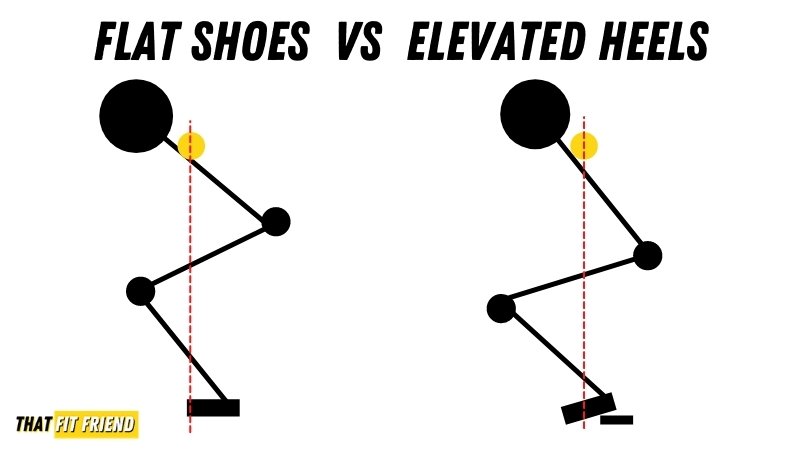




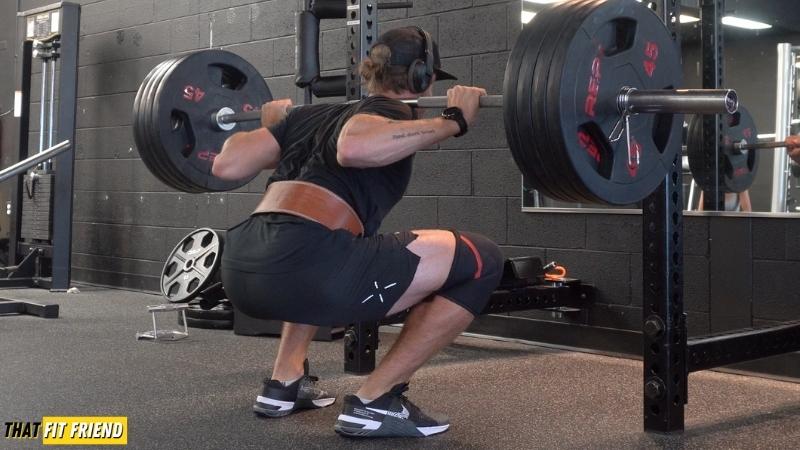




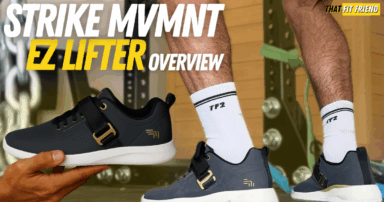
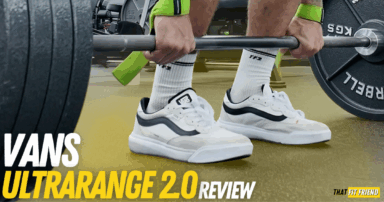
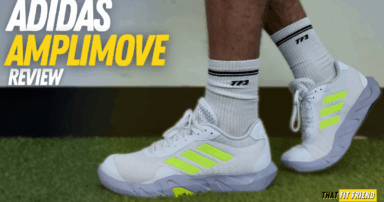
Add a Comment